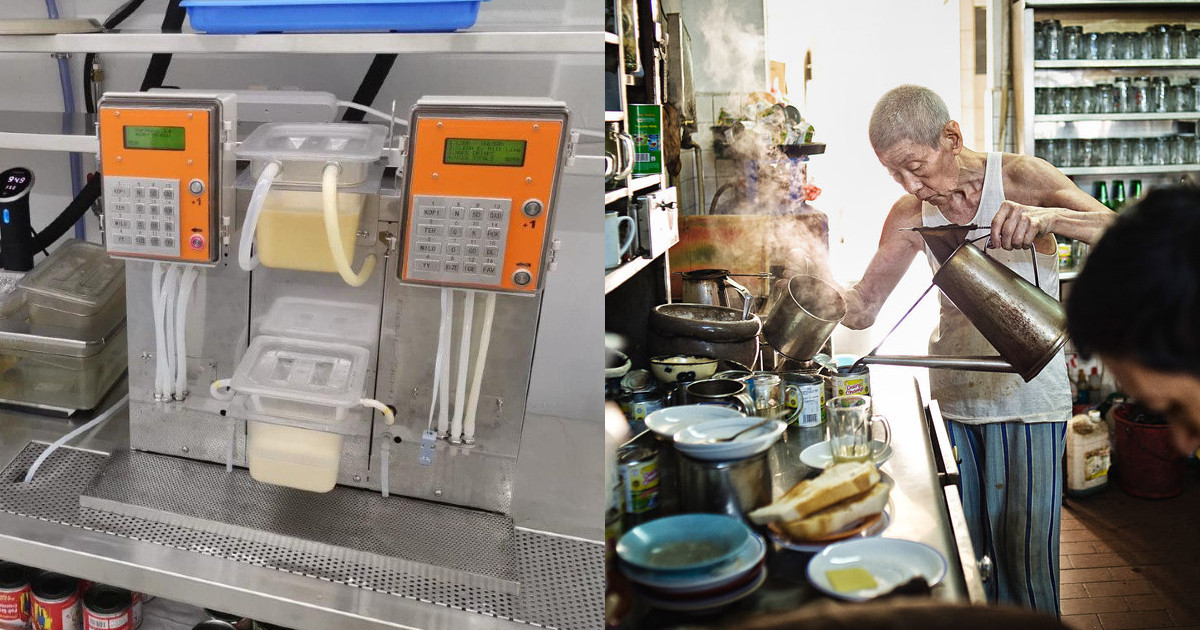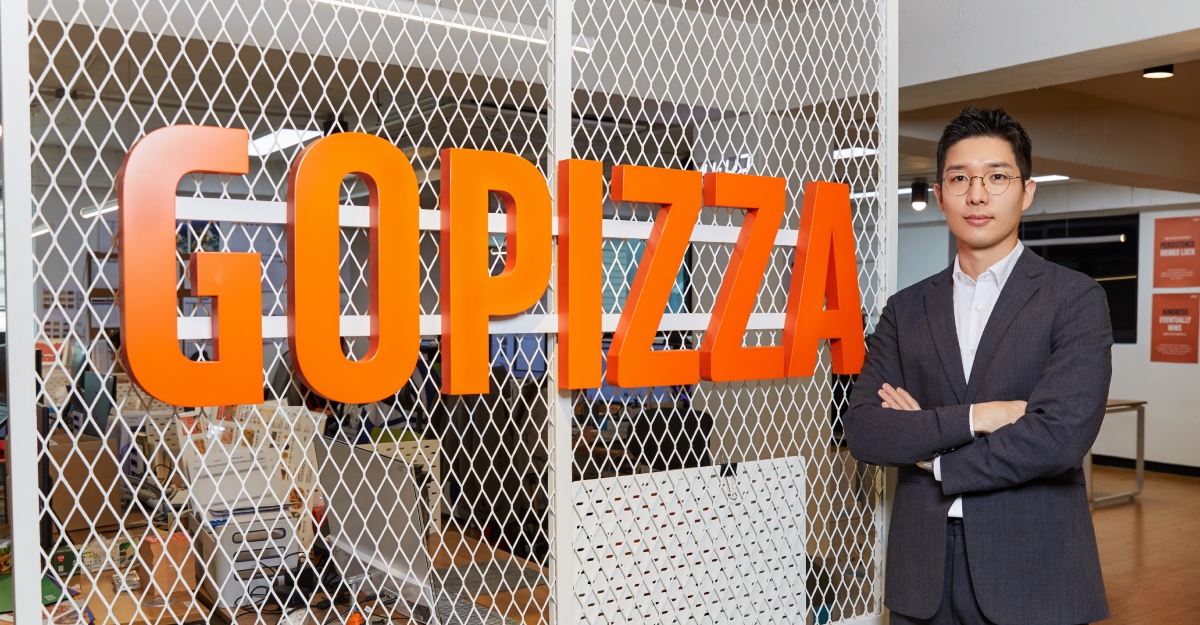Created by Jason Thai, the KopiMatic machine automatically brews your classic cup of kopi.
Hawkermatic, the foodtech startup launching the kopi-making machine made a stir in the online space last week with its attempt to digitise one of Singapore’s cultural frontiers: the coffee shop.
A long-time player in the F&B industry, Jason came up with KopiMatic when he was unable to find a skilled kopi brewer for his coffee shop at One-North in 2015.
The plan was to build a machine that didn’t require the manual labour needed to brew a cup. Jason went on to learn everything from 3D printing to design, to help create prototypes of the KopiMatic.
It took three iterations before he was satisfied, and Jason claims to have sold over 60,000 cups of kopi already. The machine is also capable of making other classic drinks like yuan yang and teh.

Hawkermatic claims to have received interest from at least 10 local coffee shop chains so far, spanning 200 outlets in total. Its goal is to roll out 1,000 units of the KopiMatic machine by 2022.
Will It Replace Kopi Brewers?
According to Jason and his team, they are confident that even a coffee connoisseur would be unable to tell the difference between kopi brewed by the KopiMatic and a professional kopi brewer.
If KopiMatic takes off, it might give kopi brewers a run for their money.
Currently, Kopimatic works on a subscription model. It is available for rent at a minimum of S$238 per month.
According to finance websites like Seedly and MoneySmart, hawkers and their stall assistants typically earn between S$1,000 and S$3,000 a month — that’s a cost difference of over S$800.
Unlike humans, the KopiMatic — being a machine — can function round the clock. It’s also able to serve drinks at a faster pace than humans, moving 400 cups per hour through the service line.
There’s no need for “recruitment and staff retention costs, salary increments, annual leave, medical leave, personal leave and insurance” when you purchase the KopiMatic, Hawkermatic claims on its website.
Responding to criticism that the introduction of the KopiMatic loses the “human touch”, Hawkermatic stressed that automated brewing saves older kopi makers from repetitive stress injury (RSI).
Older kopi brewers experience aches and pain from pulling pots of kopi every day.
While KopiMatic may ease that burden, it may also potentially put kopi brewers out of jobs, or relegate them to smaller roles as servers.
KopiMatic: SEA’s Spin On Espresso Machines
The cost savings of a machine like the KopiMatic may be enough to tip hawkers over the edge during a period of low footfall.
The pandemic is keeping everyone indoors and F&Bs — being among one of the worst-hit industries — need to cut costs. But what makes the KopiMatic different from an espresso machine?
The art of “pulling kopi” seems to be a technique specific to the Southeast Asian culture that can’t be replicated in espresso machines.
There are steps in the brewing of kopi that can’t be skipped. That includes both ingredients like the use of condensed and evaporated milk, as well as the techniques used to “pull” kopi.
Traditionally, kopi is strained through a sock, and poured from container to container to create a smooth, frothy texture. Minute details like stirring the kopi mixture are also required to ensure that kopi tastes authentic.

According to Hawkermatic, the KopiMatic replicates every step of the kopi brewing process. From the pouring of the mixture, the flick of the kopi brewer’s wrist, even up to a millilitres precision of condensed milk.
That’s not a function you’ll find on an espresso machine, which only makes Western-style coffee drinks.
Granted, espresso machines are one-off purchases and are available as home appliances so they’re still far more attractive for the average consumer than a KopiMatic.
Meanwhile, KopiMatic seems to be an inevitable development in the advancement of food tech. It may also be a welcome innovation due to the hawker industry’s manpower shortage and high staff turnover.
Where humans fall short, machines can come in, at least to prolong the lifespan of a beloved aspect of Singapore’s food culture.
It’s unlikely that the machine will wholly destroy the craft of kopi brewers, but it’ll certainly relegate them to smaller roles.
And if at some point, we’re able to brew our own cup of kopi at home, no one will be the worse for wear.
Featured Image Credit: Mothership / The New York Times








